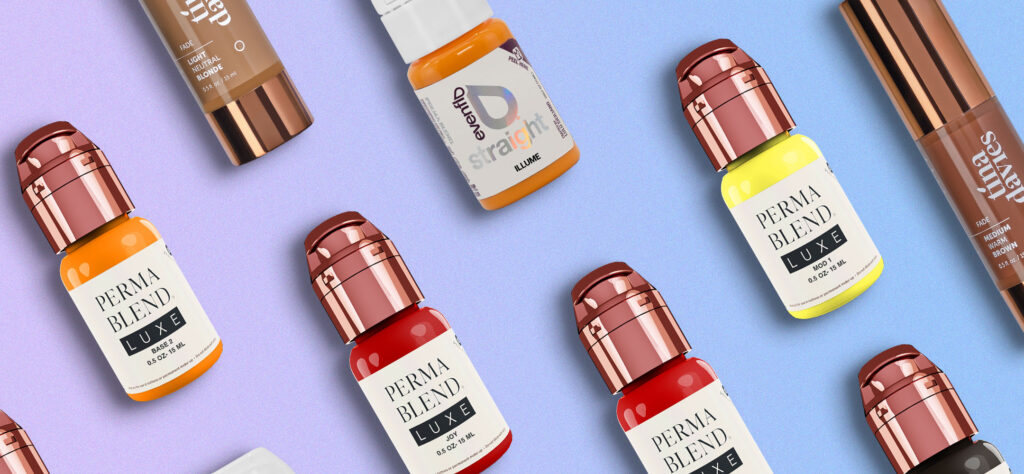Choosing the Right Pigment for Every Skin Tone
Selecting the perfect pigment for your client is more than just picking a shade that you think looks good, it’s about understanding colour theory and pigment science to ensure long-term stability and beautiful healed results.
Every skin tone has unique undertones and characteristics that influence how pigment heals and ages, so choosing wisely is essential for creating lasting, high-quality permanent makeup.
In this guide, we’ll explore how to choose the right pigment for every skin tone so you can achieve flawless PMU looks for your clients!
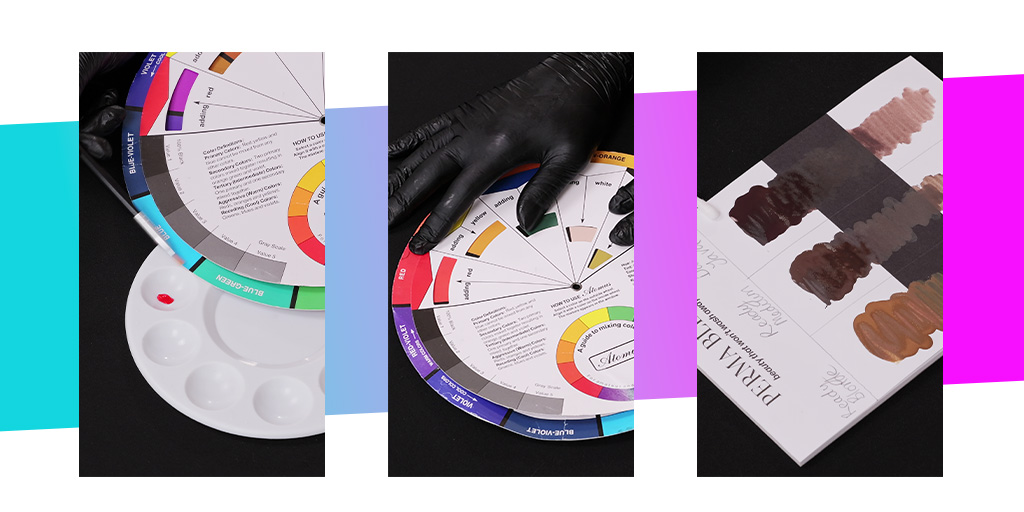
Understanding Colour Theory in PMU
To achieve predictable, long-lasting results, PMU artists must have a solid grasp of colour theory. This means understanding how pigments interact with different skin tones, how they fade over time, and how to correct or modify them when necessary.
A great resource for mastering PMU colour theory is Natalie Della-Verde’s Colour Theory video, which breaks down the science behind pigment selection.
Organic vs. Inorganic Pigments: What’s the Difference?
When selecting a pigment, you’ll often choose between those created with organic and inorganic formulas, each with its own benefits:
- Organic Pigments: These pigments tend to be brighter and more vibrant as they’re made up of carbon rings and chains, consisting of smaller particles that reflect more light. They’re also longer-lasting and preferred by clients who want bolder looks with less frequent touch-ups.
- Inorganic Pigments: These pigments contain mineral-based components consisting of larger particles meaning they reflect less light and are more opaque.They’re more muted and earthy and fade quicker making them ideal for clients who don’t want to commit long-term to one look.
It’s important to note that most pigments are created using a hybrid formula but depending on the amount of organic or inorganic ingredients, it will lean more towards being an organic or inorganic-based pigment.

Titanium Dioxide, a white inorganic pigment used for its opacity and ability to lighten colours, and Carbon Black, known for its longevity, are two key ingredients found in PMU pigments. The amount of each ingredient used in a formula will depend on what the pigment has been designed for and what colour it is. It’s important to understand how these ingredients work in pigments so you can better assess how they’ll react with each client’s skin tone.
A well-rounded PMU artist knows when to use each type of pigment and the overall effect they will have in different skin types.
The Importance of Modifiers
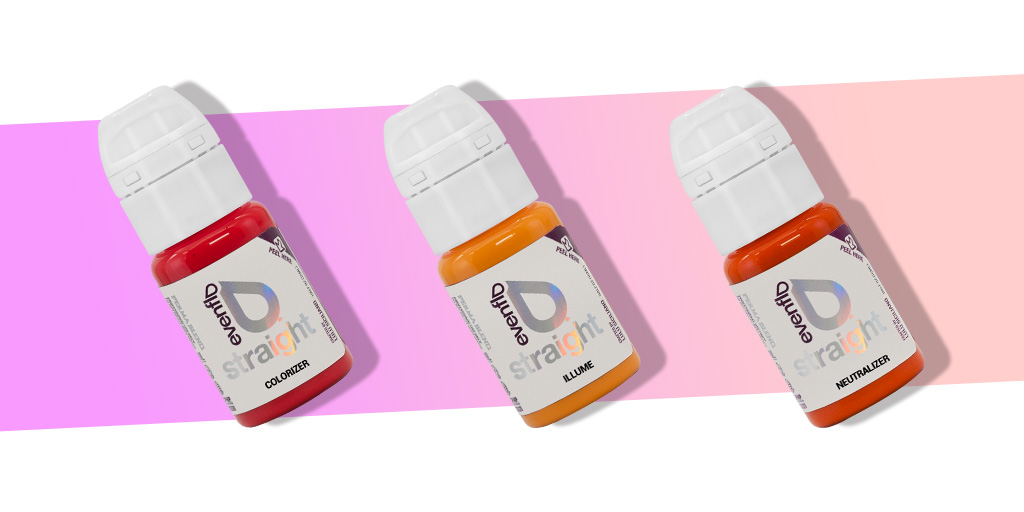
Skin tones can have cool, warm, or neutral undertones, which means some pigments may heal with unwanted ashiness, redness, or dullness if not adjusted correctly. This is where modifiers come in.
- Warm Modifiers (e.g., orange, yellow, peach) help correct cool undertones and prevent pigments from healing too grey or ashy.
- Cool Modifiers (e.g., green, blue) help neutralise overly warm or red tones.
- Neutral Modifiers can balance out extreme tones without drastically altering the pigment.
Using the right modifier ensures the pigment heals beautifully and remains stable over time.
Beauty Inclusive Pigments for Melanin-Rich Skin
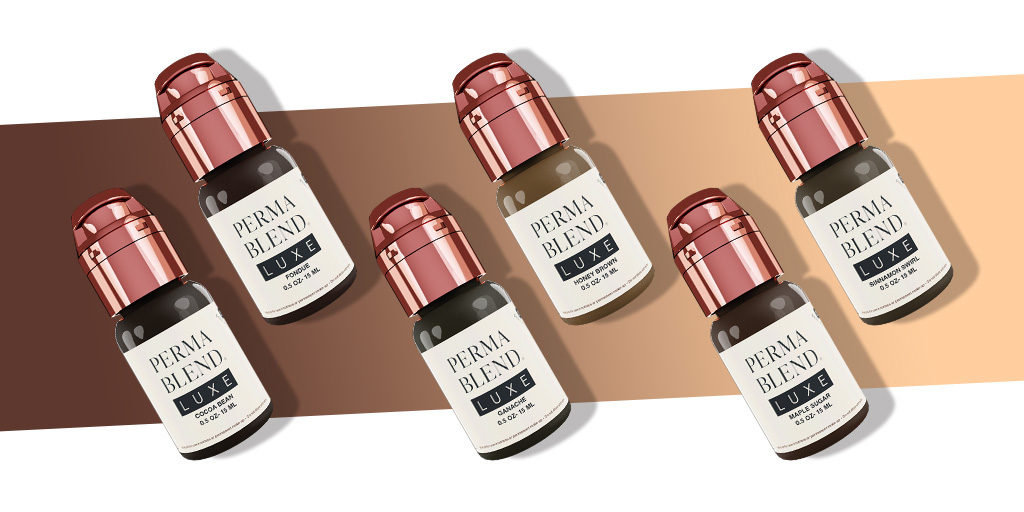
One of the biggest challenges in PMU is finding pigments that work well on melanin-rich skin without healing too dark, ashy, or grey. This is where the Perma Blend LUXE Chocolate Collection Set shines.
Developed in collaboration with PMU artist Amina Sadiq, this collection features six warm-based brow pigments that help counteract cool undertones and prevent unwanted ashiness in the healed result. The shades, Honey Brown, Sinnamon Swirl, Maple Sugar, Fondue, Ganache, and Cocoa Bean, are designed to be beauty-inclusive and ensure melanin-rich skin tones get the best, most natural-looking results.
By investing in your education around working with melanin-rich skin, you’ll be incorporating beauty-inclusive values into your work as a PMU artist.
Sculpted Sets from Perma Blend – Science-Backed Solutions
The Embody and Enhance Sets by Sculpted X Perma Blend LUXE are designed to provide predictable, stable results across a range of lip tones. For lip tattooing, choosing the right pigment is crucial, especially when working with cool-toned lips that require neutralisation.
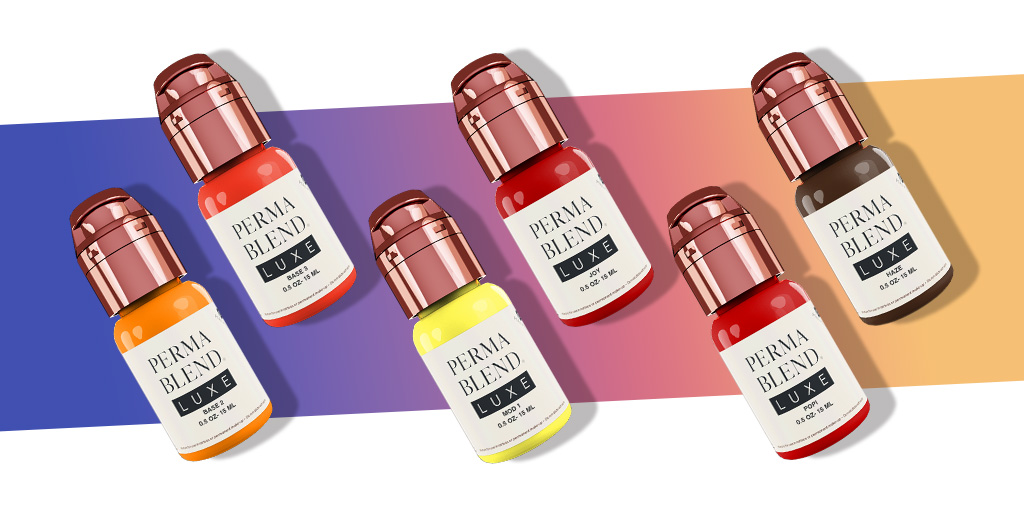
- Embody Set: This set has been designed for lip neutralisation procedures. It contains 4 base colours, 3 modifiers and 1 adjuster.
- Enhance Set: The colours in the Enhance set can be used for lip blush treatments following lip neutralisation using the Embody Set!
In both sets, the pigments can be modified to create custom blends to help you choose the right pigment and shade for every skin tone!
Backed by extensive research and pigment science, these sets ensure artists have everything they need to confidently tattoo all lip tones with long-lasting, beautiful, healed results.
Selecting the right pigment for your client goes beyond simply picking a shade—it requires knowledge of colour theory, undertones, pigment longevity, and modification techniques. Whether you're working on brows, lips, or eyeliner, understanding how to adapt pigments to each skin tone is key to achieving beautiful, lasting results.
With game-changing products like the Perma Blend Chocolate Collection and Sculpted Sets, as well as expert knowledge from Natalie Della-Verde’s Colour Theory video, you’ll be well-equipped to deliver flawless PMU results for every client.
